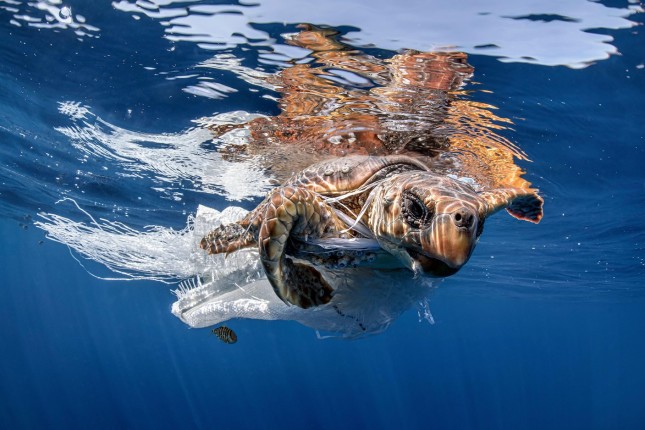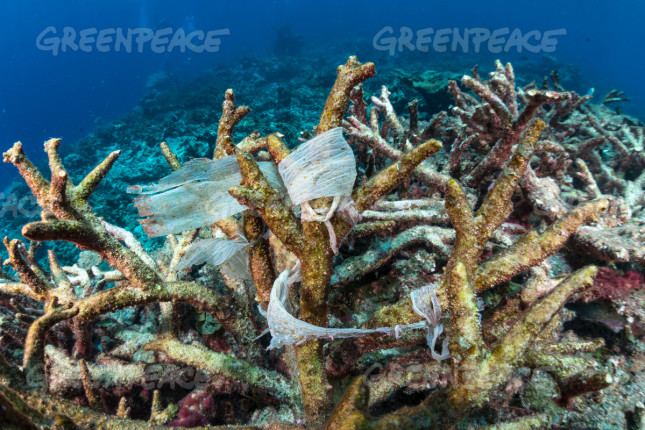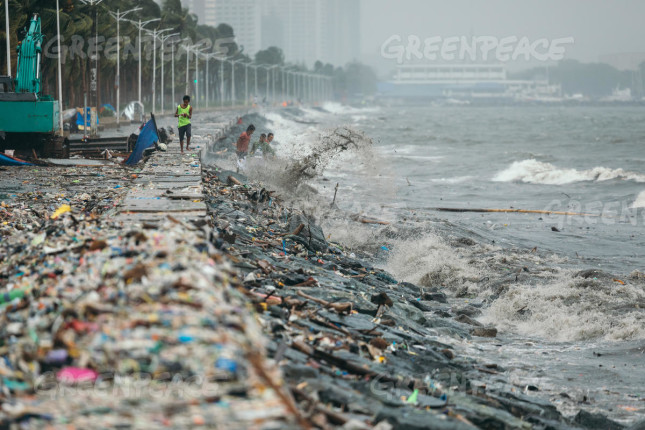-
UN Meeting Sets Sights on Global Plastics Treaty

In Nairobi this month, the world’s governments will discuss the path towards the first global treaty to tackle plastic pollution. But with multiple proposals on the table, the scope and ambition of a potential treaty hangs in the balance.
The UN Environment Assembly, scheduled for 28 February to 2 March in the Kenyan capital, could deliver a mandate for an intergovernmental negotiating committee to broker an agreement obliging all countries to eliminate plastic leakage—especially into the ocean—through national targets and plans for reduction, recycling, and management.
There is an incomprehensible amount of plastic in the ocean—up to 51 trillion fragments in surface waters alone. Marine plastic pollution harms animals, which ingest or become entangled in it, while the risk to humans who eat contaminated seafood are still unknown.
Much of the plastic entering the sea comes from rivers. A 2021 report from Meijers et al, including Christian Schmidt who authored a landmark 2017 report on ocean plastic leakage, found that 1000 rivers account for 80 percent of the plastic that makes its way from rivers into the ocean, and much of this leakage happens in Asia.
Developed nations in the West have for decades exported up to 10 percent of their plastic waste, particularly to Asia. However, in 2018, China banned “foreign garbage” after years of importing almost half of the world’s plastic waste.
In addition to large accumulations of floating plastic, such as the Great Pacific Garbage Patch, which covers an area three times the size of France, scientists are concerned about microplastics of less than 5mm. These have been found everywhere from the remote Antarctic to the deepest ocean trench.
Plastic pollution is not only found in oceans and rivers. Plastics have been detected in every corner of the Earth, from the Arctic to the top of Everest. What’s more, plastic production is a major driver of climate change. If the whole plastics lifecycle were a country, it would be the fifth-largest emitter of greenhouse gases.
While technological solutions to clean up plastic waste are promising, and attempts to curb the use of single-use plastics are popular, there is still a need to limit the production of the material in the first place. Only a global deal can achieve this.
What might a global plastics treaty look like?
Existing global treaties cover elements of the issue: the Basel Convention regulates trade in waste, including plastic; the International Maritime Organisation is responsible for marine plastic litter from ships; and the Stockholm Convention protects humans against harm from plastic products. None, however, represents a holistic tool to tackle the problem at the global level. Unlike for climate change and biodiversity loss, there is currently no international framework to address plastic pollution, despite growing recognition that it, too, could pose a “planetary boundary threat.”
The UN raised the idea of a global response to plastic pollution at the third Environment Assembly in 2017. It established an ad hoc open-ended expert group on marine litter and microplastics to consider what a global agreement would look like.
Momentum has been building ahead of this month’s talks, with 154 states already supporting talks on a new global agreement. Late last year, the UN special envoy for the ocean, Peter Thomson, said at the COP26 climate summit that a treaty in Nairobi would be critical to keeping oceans healthy. More than 70 consumer brands, including Coca-Cola, PepsiCo, Unilever, and Ikea, issued a joint statement in January setting out plans for reducing plastic production and use. Significantly, the United States, the world’s largest producer of plastic waste, announced late last year that it would participate in talks.
In order for negotiations over a global treaty to begin, a resolution which sets the scope and mandate for them must first be adopted at this month’s Environment Assembly. Three such resolutions have been tabled. Two call for a legally binding framework on plastics, which would be the first of its kind. But the differences between the two are significant.
The resolution, tabled by Rwanda and Peru and co-sponsored by about 50 countries, including Norway, Chile, Pakistan, and the EU, is considered the most ambitious. It proposes an “open mandate” for a negotiating committee, meaning negotiators could work on a broad range of issues relevant to plastic pollution as discussions progress. It suggests a “full lifecycle” approach to plastics, tackling plastic production as well as waste management. And it is worded to address plastic pollution in any environment, not just the ocean.
A second resolution from Japan and supported by Antigua and Barbuda, Cambodia, Palau and Sri Lanka, is more limited in scope. The resolution specifically addresses “marine plastic pollution,” is focused on management of plastic waste (rather than production), and proposes a closed mandate, which would mean negotiators could only address this aspect of plastic pollution when working towards an agreement.
Meanwhile, India entered discussions at the 11th hour with an alternative resolution on single-use plastics, published on 31 January. Unlike the other proposals, India’s document focuses on a voluntary framework, rather than a mandate for the creation of a legally binding global agreement.
Several UN member states have asked that the two original proposals be merged before the main meeting. “Japan has already started dialogue with Norway,” said Shahriar Hossain, secretary general of the Bangladesh-based non-profit Environment and Social Development Organisation, in an interview. “I believe that nobody is interested in going for a vote, so they will come up with some compromise plan.”
In a statement with the G77 on February 3rd, China stated its support for starting negotiations on plastic pollution, calling for “ambitious goals and equally ambitious means of implementation,” pledging to “engage actively and constructively in the negotiation of the different tabled resolutions.”
Civil society urges ambition and attention on finance
Christina Dixon, deputy ocean campaign lead at the Environmental Investigation Agency, which published a table comparing the two proposals, said in an interview with Third Pole: “The rampant over-production and consumption of plastics, as well as their myriad of toxic additives… has created an environmental disaster that must now be urgently addressed. We are on the precipice of securing a potentially world-changing global agreement on plastic pollution and it is essential that governments remain ambitious on its scope, equipping it with a mandate to look at plastic pollution across its lifecycle and in all environmental compartments.”
Peter Thomson, UN ocean envoy, who will travel to Nairobi to assist efforts on the treaty, said preventing marine pollution is a major component of the UN’s Sustainable Development Goal (SDG) 14, which covers Life Below Water. “The largest and most harmful fraction of that pollution—some 85 percent—is plastic,” he said in an interview. “We currently dump 11 million metric tons of it into the ocean each year and this figure is projected to double by 2030 and nearly triple by 2040. As responsible residents of Planet Earth, we cannot allow that travesty to continue.”
Andrew Norton, director of the International Institute for Environment and Development, said low-income countries had ended up as the dumping ground for plastics from richer nations. “Major investment and support will be needed to find viable alternative models for dealing with plastic that properly incentivize more sustainable and just practices in future,” he said in an interview.
Gary Stokes, operations director of NGO Oceans Asia, said in an interview that it was particularly important that negotiations addressed plastic pollution in the form of discarded fishing equipment. “If governments want to seriously address [this], they must look at the fishing industry and hold them accountable,” he said, adding that the UN Environment Assembly “has the potential for a concerted global address of plastic waste, but with so many varied interests involved, from countries to plastic producers, users and NGOs, we fear that this will follow the same lines as the climate change meetings.”
Torsten Thiele, founder of Global Ocean Trust, said in an interview that finance must be considered at the outset of negotiations “if we want to ensure that an ambitious agreement can be implemented. This will include both appropriate needs assessment and capacity-building as well as institutional funding arrangements and innovative financing mechanisms that engage the private sector sufficiently.”
Jessica Aldred is special projects editor for China Dialogue, focusing on globally important environment themes including the oceans, palm oil and biodiversity. She spent 10 years as deputy environment editor at the Guardian, and has nearly 20 years’ experience working in the newsrooms of major media organizations in London, Sydney and Melbourne. @j_aldred
Aron White is the Asia Pacific editor at China Dialogue. He has previously worked in wildlife conservation, including as a wildlife campaigner and China specialist at the Environmental Investigation Agency. He holds a degree in Chinese Studies and has lived in Beijing and Taipei
Sources: China Dialogue Ocean, Environmental Investigative Agency, Environmental Science and Technology, Ministry of Commerce of the People’s Republic of China, National Geographic, Nature, NOAA, The Ocean Clean Up, Planettracker.org, Plasticpollutiontreaty.org, Reuters, Science, Science Direct, Third Pole, UN, UNEP, WWF.
Lead Image Credit: A sea turtle trying to free itself from plastic in Spain (Image: David Salvatori / Alamy)
 A Publication of the Stimson Center.
A Publication of the Stimson Center.





